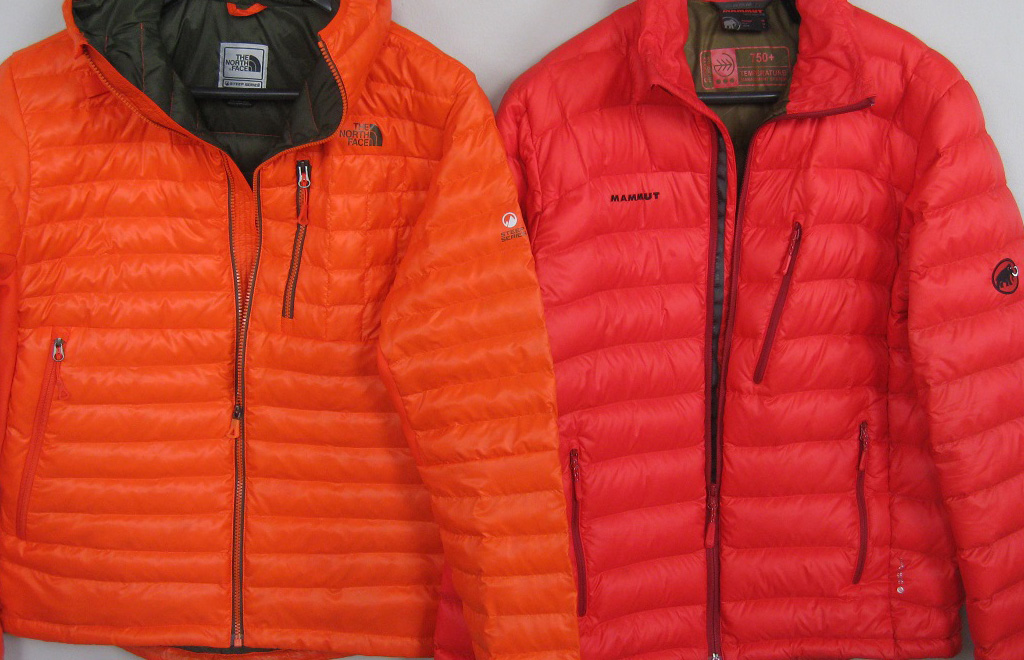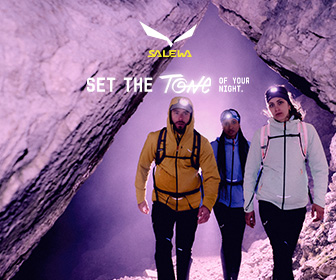Sort of a Warm Winter Jacket Buying-Guide
Have a seat near the fireplace and enjoy this long winter pondering of mine about warm winter jackets.
Recently I got my hands on a brand new 2014 fall collection down hoodie from The North Face. To be precise it’s the men’s Low Pro Hybrid Jacket of the Steep Series™. (Here’s a link to the latest edition). So now I’m the proud owner of TWO down jackets I BOTH like.
When I bought my first down jacket a couple of years ago, the Mammut Broad Peak II, I wasn’t overwhelmed by the amount of choice I had. Don’t get me wrong, there are a lot of down jackets from even more different brands, so when you’re at a store there’s a huge range to choose from, but they didn’t seem very different from each other. I chose the Broad Peak II mainly because Mammut’s shape usually fits me like a glove and in addition to that it came with an interesting discount. It’s a great jacket that hasn’t disappointed me at all.
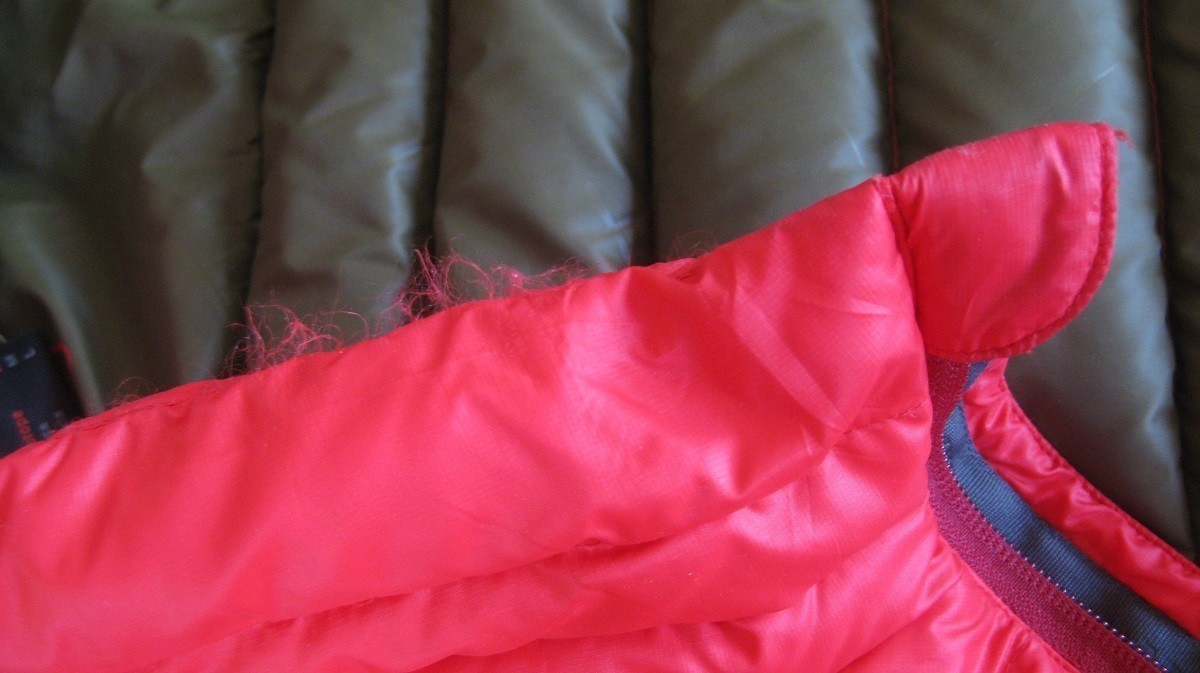
But when shopping, I don’t spend hours and hours at stores. Also, online shopping and researching isn’t the same as wearing the product outside. So when I got the Low Pro Hybrid Jacket as a gift, I got a better chance to compare two quite similar down jackets and experience slight differences between the two.
The purpose of this post is not to decide on which one is better, because that would be an apples and oranges face-off, but to guide you in spending your hard-earned money on something worthwhile.
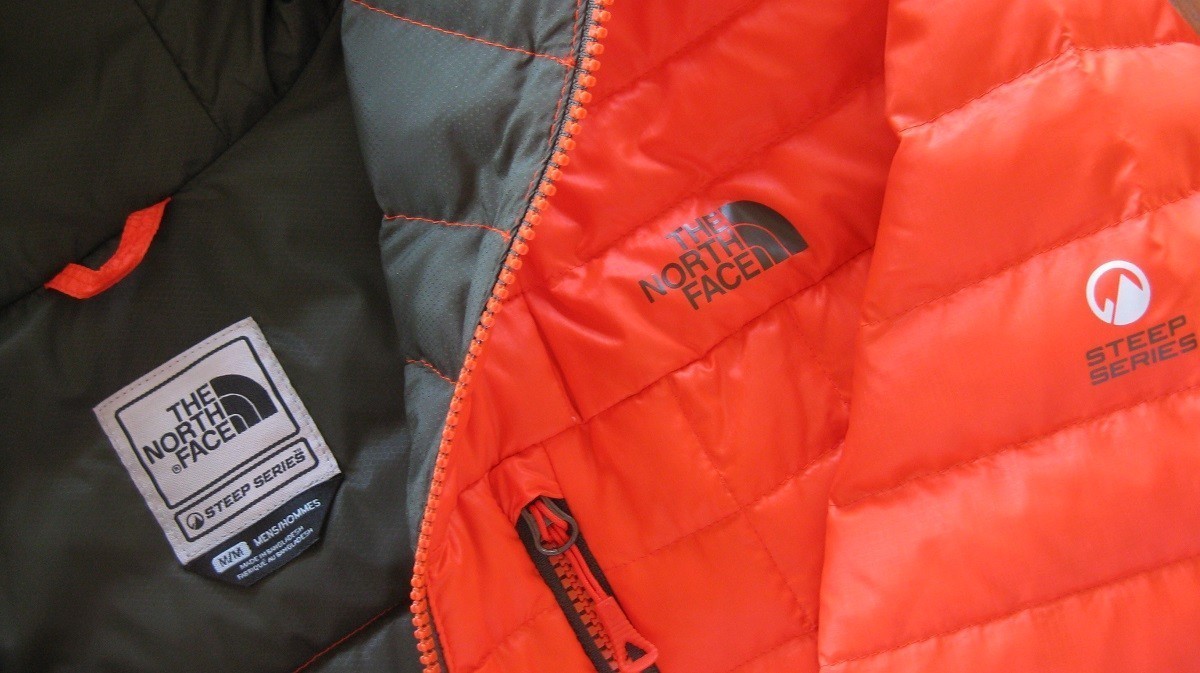
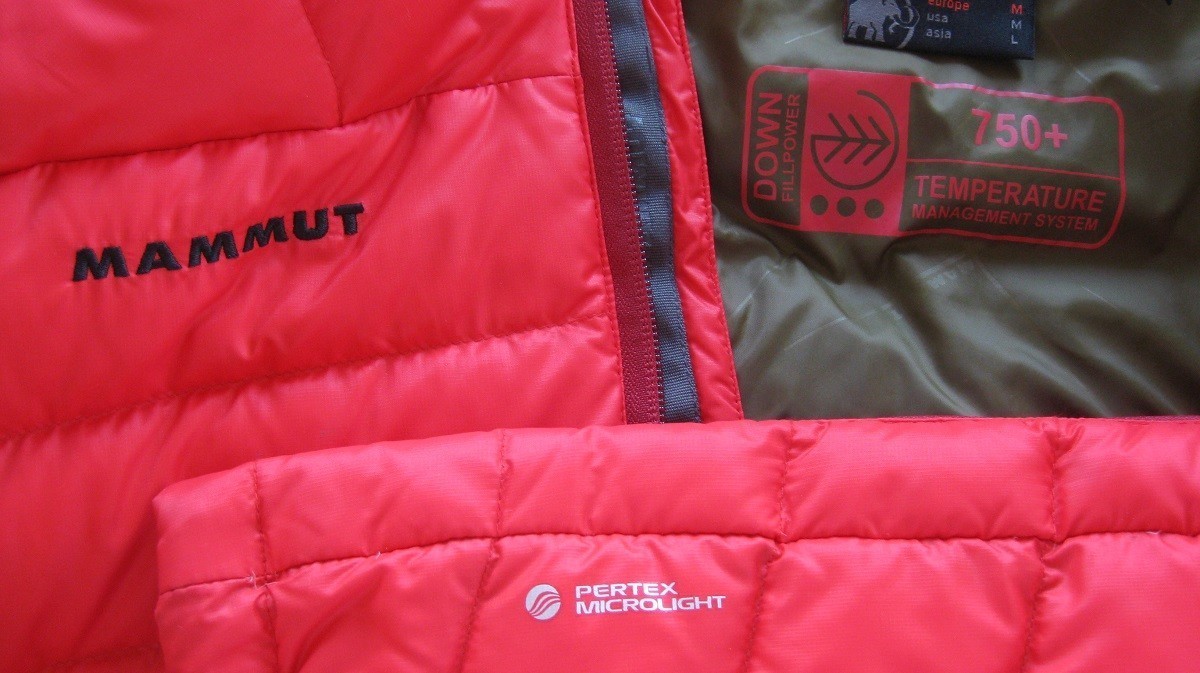
Note to the reader: In the most of the photo’s the The North Face Low Pro Hybrid Jacket is on the left-side and the Mammut Broad Peak II on the right. And otherwise the Low Pro Hybrid is the Valencia Orange colored one, the Broad Peak II is Inferno red.
‘Down’ -hill Skiing
I like to multipurpose use my gear, so for a skiing trip, I didn’t buy a dedicated skiing jacket but instead opted for the Broad Peak II as the outer layer for on-piste skiing. And that worked just fine for me. When you´re plowing powder, off-piste, that may not be the best solution for you. Also, if you’re a risk-taking adrenaline junkie and take a lot of falls, down may not be wise. If you fall on hard snow or ice, you may destroy your jacket, it may rip easier than less delicate ones. Can’t blame it on the jacket though, ‘officially’ it’s a mid-layer for insulation mainly. Same goes for climbing; when belaying, and during breaks this kind of jacket is fine, but if you need warmth when actually rock climbing, other wear-resistant fabrics may be the better choice.
I must confess I have carried my ski’s on my shoulder … that may not sustain longevity but until now, it didn’t do any damage to my Broad Peak II. But down insulation jackets aren’t built for that kind of abuse, they don’t come with reinforced shoulders, so you can’t blame ’em if you do destroy them this way.
Let’s have a look at product details now, and similarities and differences. I’ll get back to buying considerations towards the end.
To Hoodie or not to Hoodie, that’s NOT the only Question
Since this is not a review and the fact that I haven’t tested both jackets beyond repair, as we usually do, I’m going to limit myself to maybe just a little more than face value observations and first impressions. For complete detailed product info follows the links and for technical info on Down, Layering, Hard-Shells, Soft-Shells etc. check GearLimits’ GearGuide (via the menu at the top).
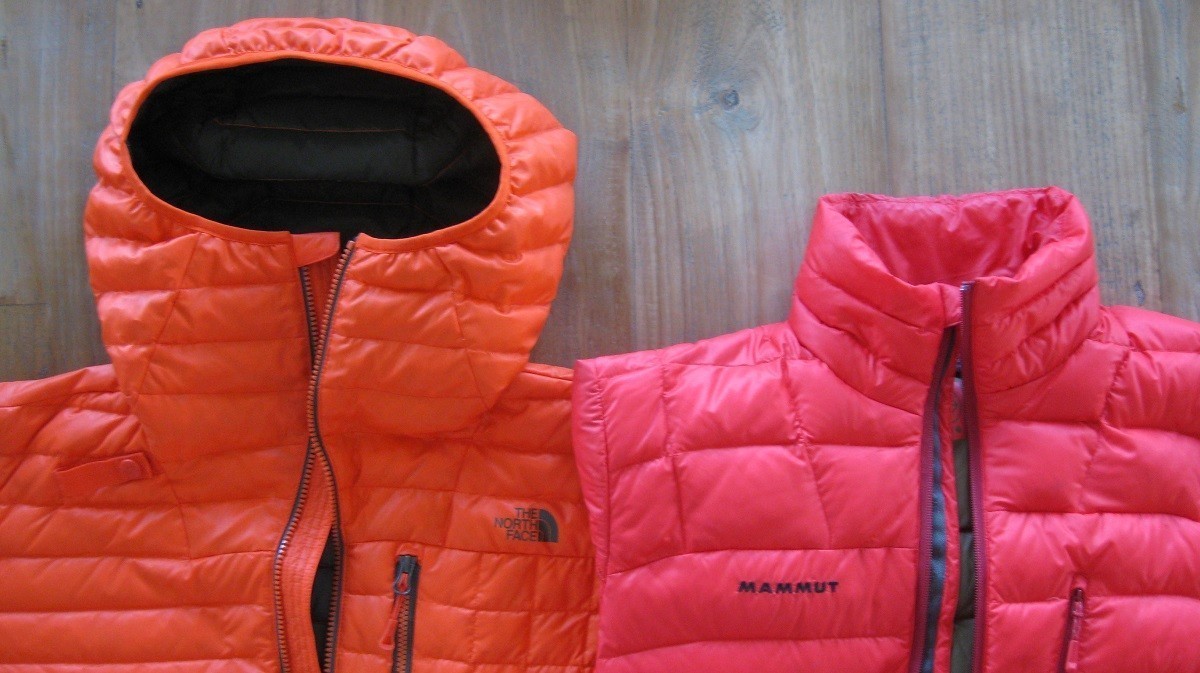
The most eye-catching difference is of course hood vs collar. But it’s not the most important, I think the thickness is, more on that below.
I found that a hood on a down jacket is something quite different from a hood on a sweatshirt you wear during summer. The latter rests on your back when you´re not wearing it, and it doesn’t bother you. For a bulkier down jacket with a hood that’s different. I think that if you’re not planning to wear the hood more than 50% of the time, you’re probably better of with a jacket with a close-fitting collar because if you wear the hood down, you’ll need a scarf or buff for your neck or an under-layer with a turtleneck. Above that, it just feels more comfortable. Besides, don’t forget that when you’re skiing, you probably already wear a helmet that may provide just the insulation you need.
The North Face vs Mammut
Both jackets are for insulation, they’re not hard-shells, but the Broad Peak II handles a little bit of rain quite well, some water pours off, so it’s not instantly soaked if you run into some rain, but of course, it takes longer to dry than a hard-shell jacket. The Broad Peak is windproof as well. So as long as it’s dry outside I prefer a down over a heavier and less breathable hard-shell.
I haven’t tested how the Low Pro Hybrid handles rain and wind, but I assume it performs more or less the same. However, according to the specs (of the 2015 edition), it has a DWR finish. But I wouldn’t fully trust on that. Because I had to do something of a water test. I accidentally dropped my brand new Low Pro Hybrid on a bar’s floor, someone barged over it immediately and smudged the beautiful Valencia Orange color with black smears. When I cleaned it at home with water it didn’t act as a hard-shell. But the R in DWR stands for ‘repellent’, not for ‘proof’, so I forgive, again.
The weight of the Low Pro Hybrid seems a bit higher that the Broad Peak II’s, let’s put ’em on the scale.
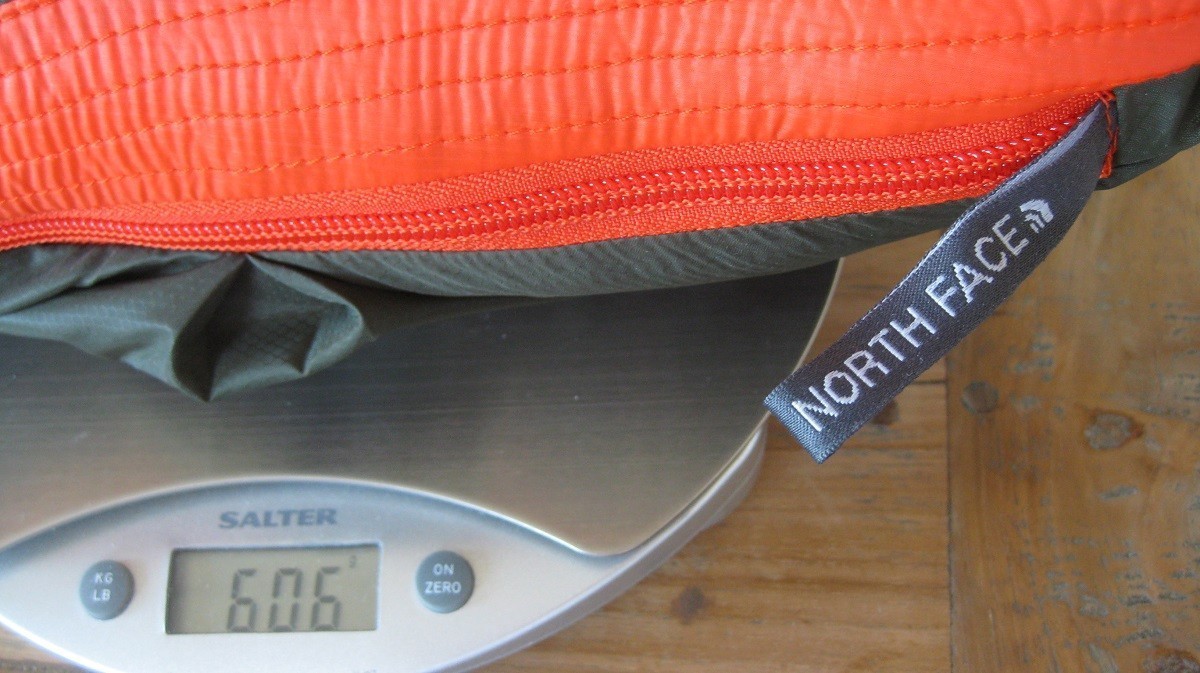
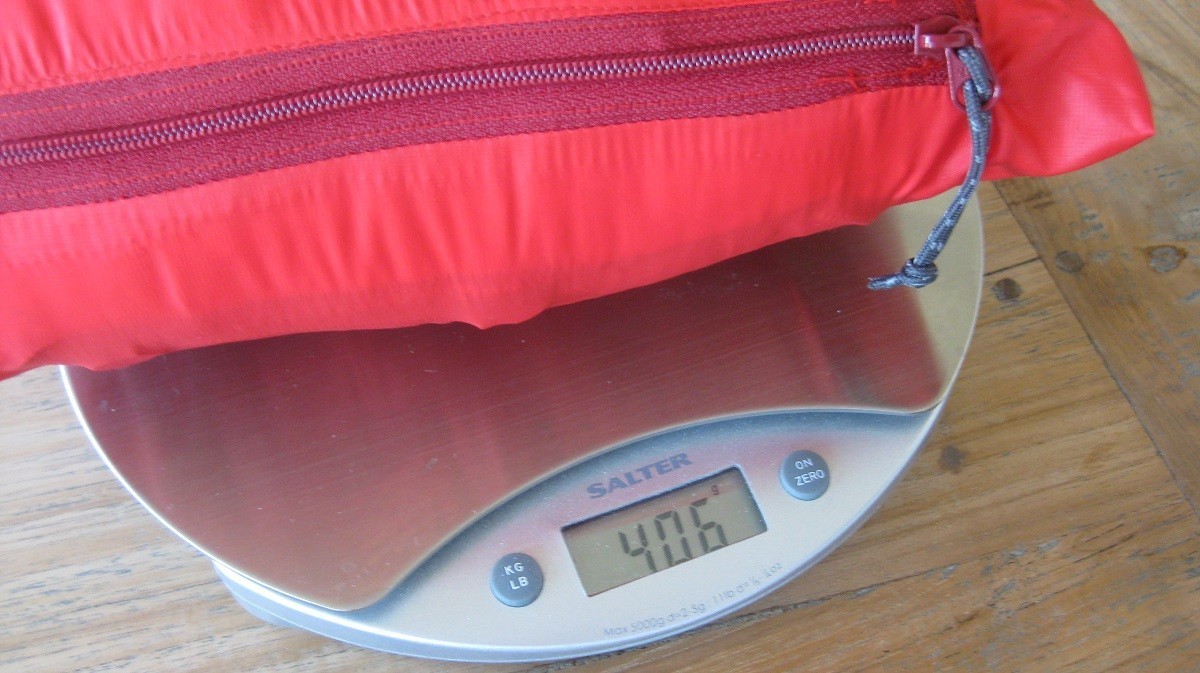
The Low Pro Hybrid weighs 606 grams. The Broad Peak II weighs 406 grams.
I think that difference can not be fully attributed to the hood. But then again, how important is weight? If you yourself can lose a couple of grams that would be much smarter.
Although I must say, wearing a very light jacket like the Broad Peak II that gives so much warmth is a delight.
Further, the Low Pro Hybrid’s down panels seem somewhat thinner than the Broad Peak II’s. It also has thin non-down ventilating inserts of FlashDry™ fabric under the armpits. So at a second glance, the Low Pro Hybrid seemed more suitable for higher activity sports than the Broad Peak II. However, during a half hour pretty quick bike ride I found out that regarding insulation they’re well-matched.
Both are highly compressible and can be stowed in the right-hand pocket (Low Pro Hybrid) or chest pocket (Broad Peak II). The Broad Peak II’s pack is stuffed a bit compacter because the chest pocket is smaller. The Low Pro Hybrid will compress a little more to a flatter package in your backpack.
Because of this compressibility, they’re not very suitable for carrying a heavy backpack. The down on your back and shoulders would crush temporarily and you wouldn’t fully benefit from the insulating characteristics.
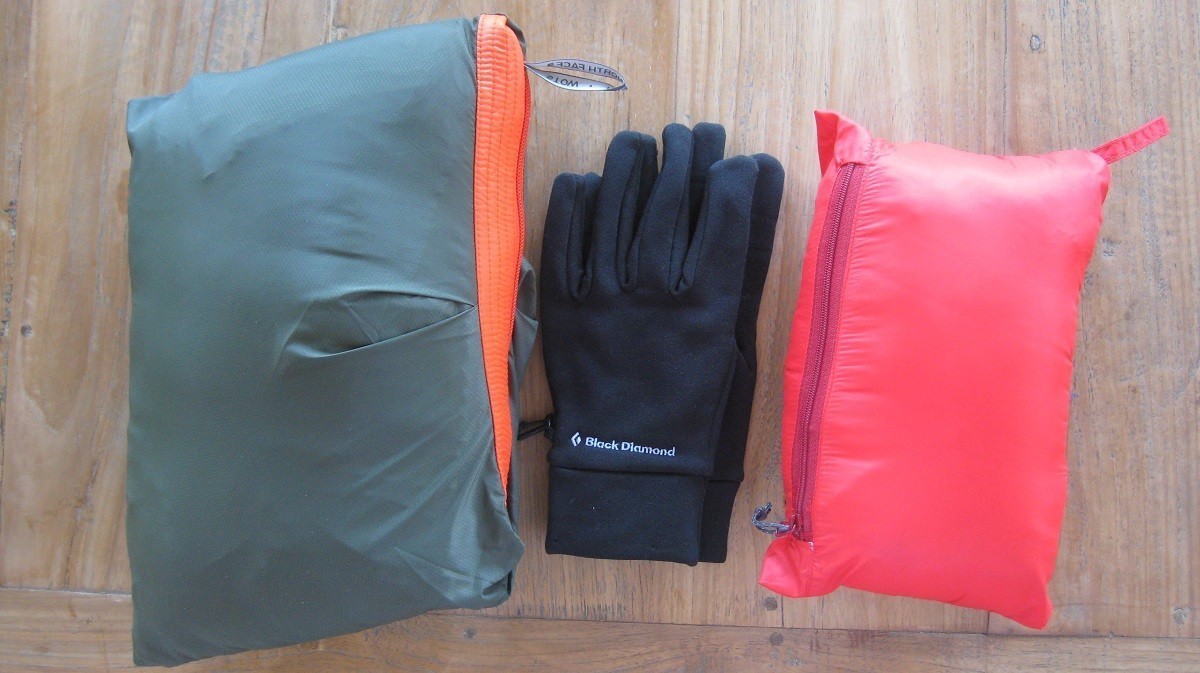
Make sure you don’t store them in the attic over the summer stuffed this way, but just like a sleeping bag store them unpacked.
Other similarities
A list of what more these two have in common (and a lot of their competitor cousins):
- ripstop wafer outside fabric
- sewn through baffles (some say you lose heat along the seams, but you might as well defend it provides a little overall ventilation, depends on how you look at it, and what you need)
- adjustable hem with 2 cord stoppers
- 2 zippered front pockets
- 1 zippered chest pocket
- wind flap behind central zipper
- airtight zippers on pockets
- cords and grippers on all zippers for easy handling (when wearing gloves)
- chin-guard (both work well, they’re not too tiny as you see often)

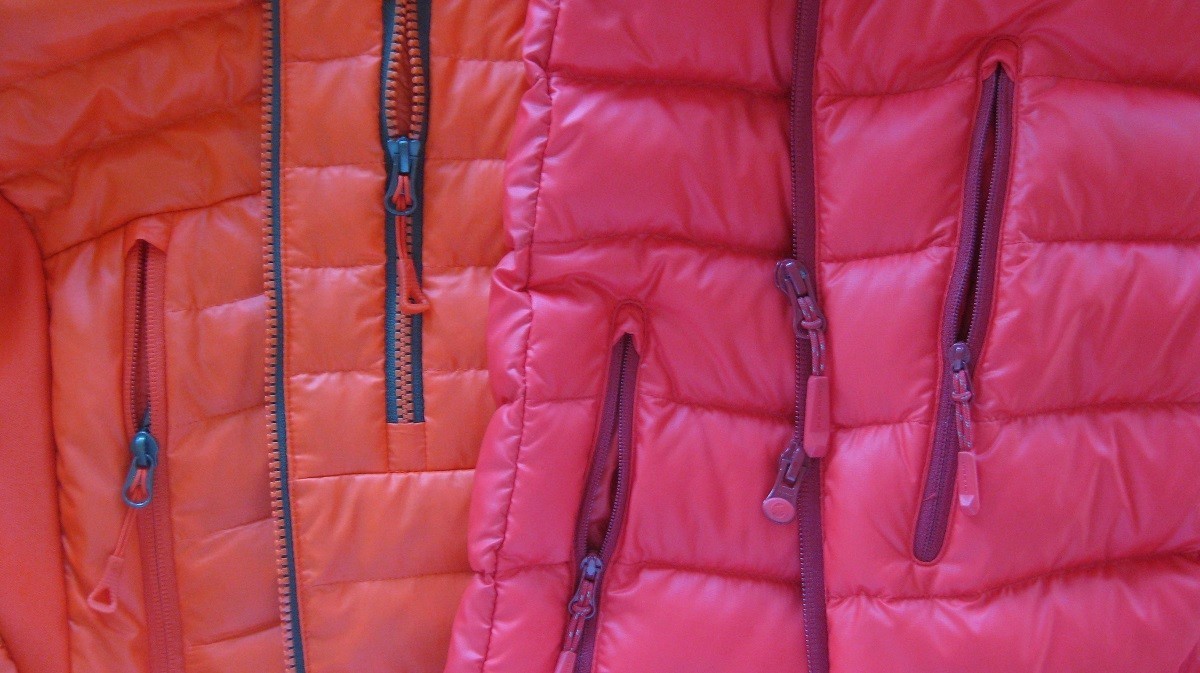

Differences, Details & Features
The Broad Peak II’s cuffs have close-fitting elastic seems to keep out the cold. The Low Pro Hybrid’s sleeves are longer and the cuffs seem wider, but they have a hidden stretch binding cuff approximately 5 cm on the inside that also keeps the cold out.
Depending on what kind of gloves you wear, you may have a preference for one or the other cuff design.
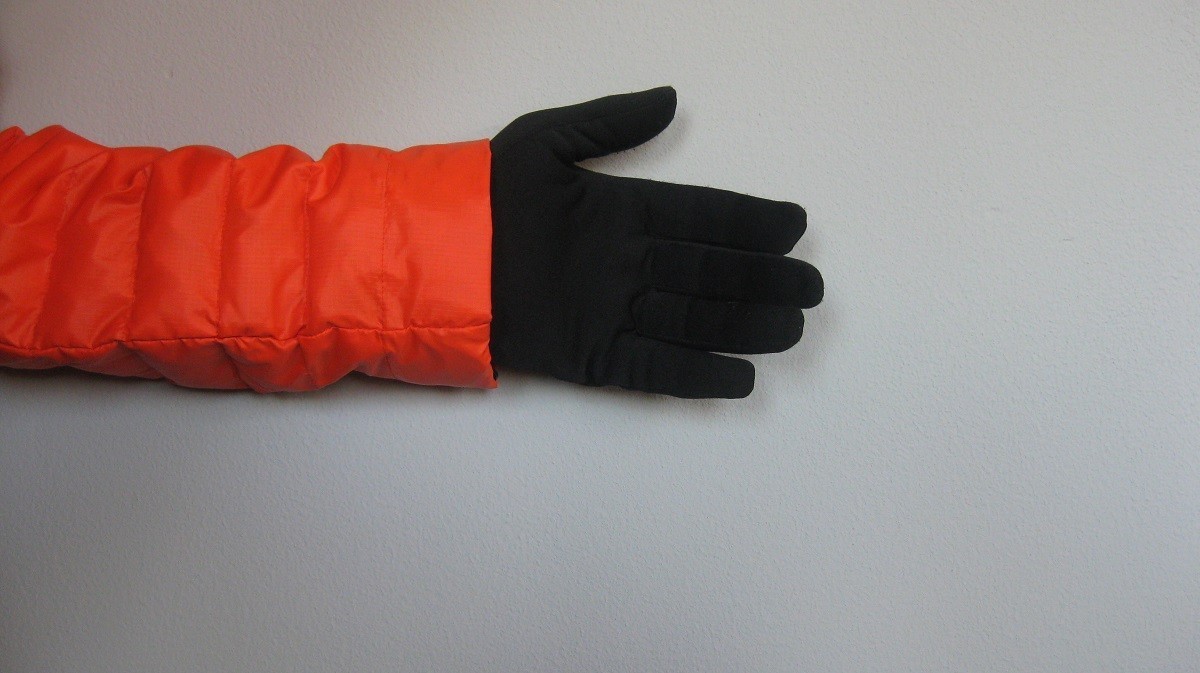
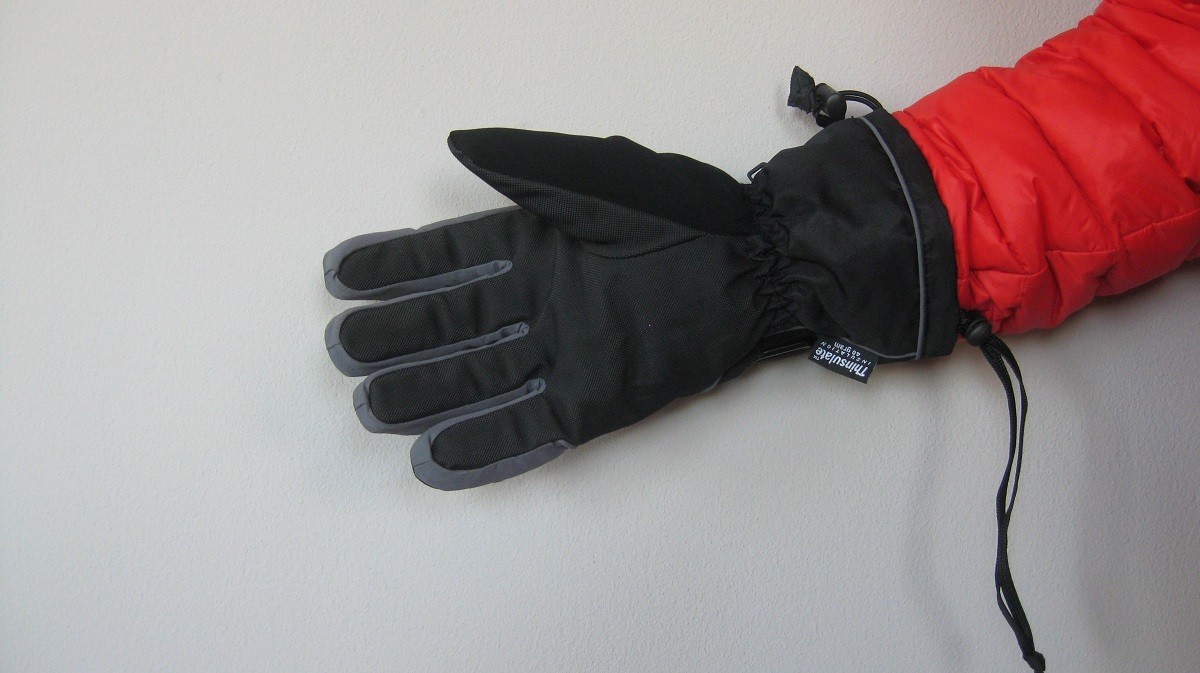
The Low Pro Hybrid and the Broad Peak II are filed with respectively 800 cuin and 750 cuin down.
The Low Pro Hybrid baffles are 4 cm wide, the Broad Peak II’s 6 cm.
As mentioned above, these small differences do not lead to noticeable differences in insulation.
Extra’s on the Low Pro Hybrid:
- A cable opening from the chest pocket for your multimedia devices (I would carefully DIY that, in case a jacket didn’t have this)
- Very large front pockets which are practical for storing large gloves or mittens (you don’t have to fold them). You can more or less still use the zippers when wearing a climbing harness. And if you don’t store anything in them, you can open the large zippers for extra ventilation.
- FlashDry™ fabric under the armpits (for extra ventilation)
- Transceiver security loops (for when you’re in avalanche territory and wear this as you mid-layer)
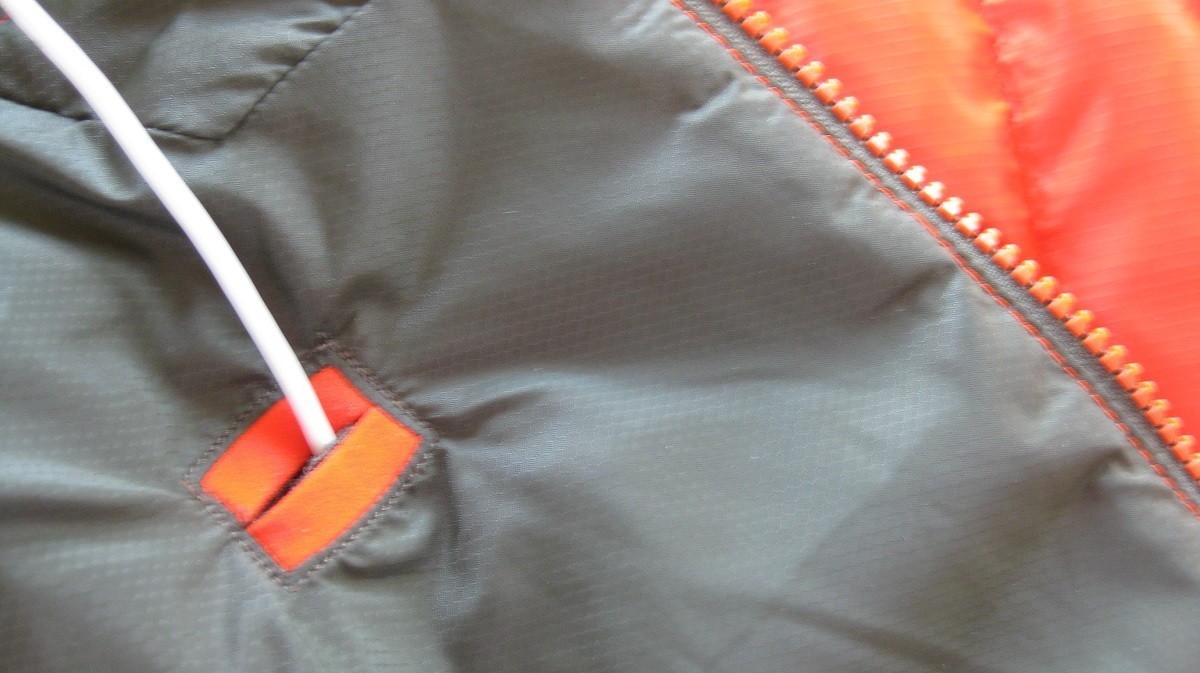
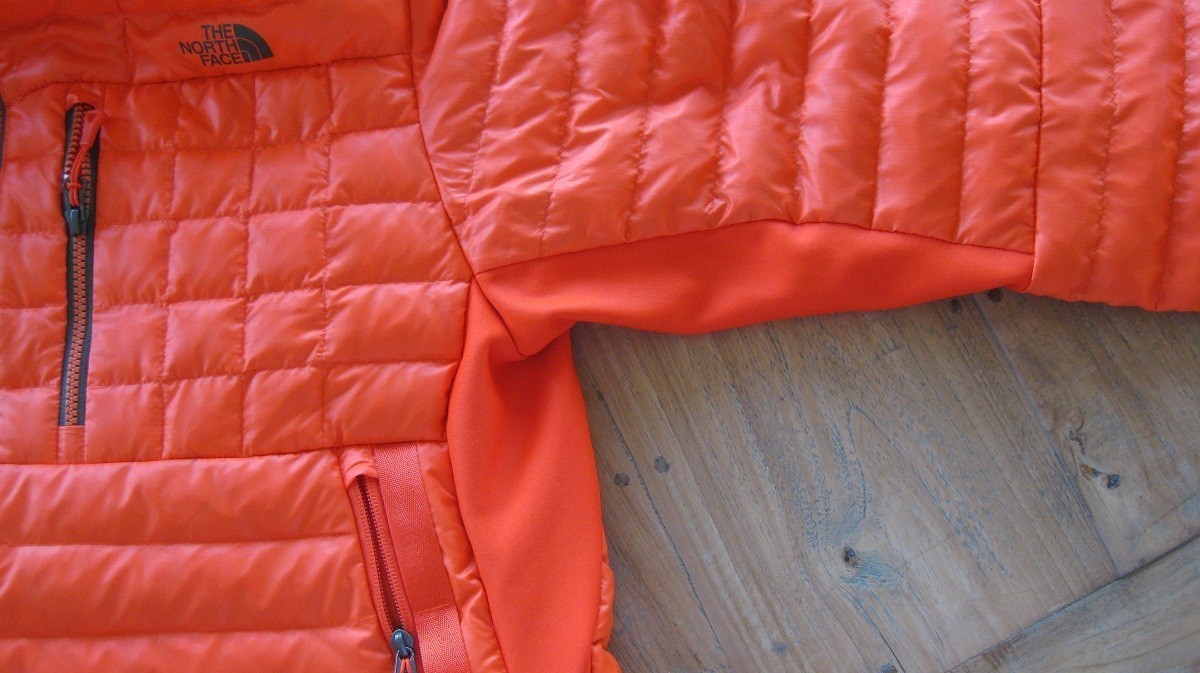
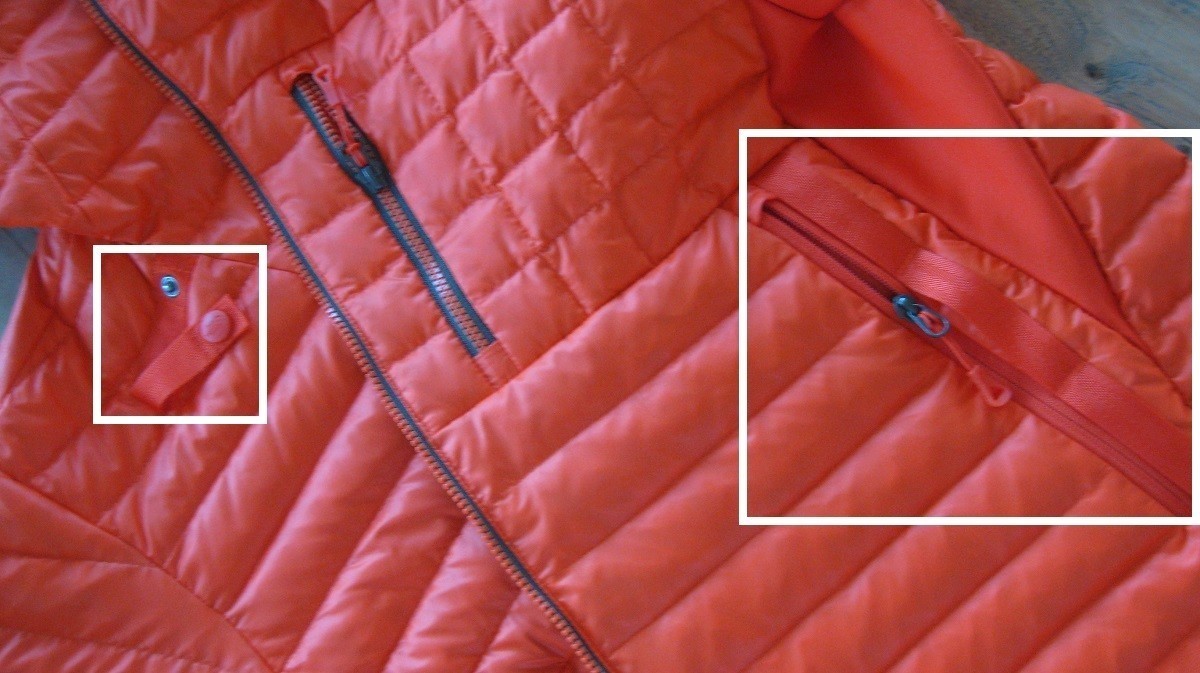
Extra on the Broad Peak II:
- A two-way central zipper (to accommodate use of a climbing harness and for extra ventilation)
Both are very complete jackets, the only thing that’s missing on the Low Pro Hybrid is a two-way central zipper. The Broad Peak II lacks a cable opening from the chest pocket.
Mid- or Outer-Layer?
For me, this kind of jacket is too thick to wear as a mid-layer unless it’s really really cold. In that case, I’d go for synthetic material instead, also because I’m afraid that a medium thick down jacket will crush as a mid-layer, therefore not work properly and just not feel comfortable.
These two jackets, however, are perfect outer layers for low impact exercise in dry weather conditions with temperatures ranging from -10°C to 10°C. For lower temperatures choose a thicker box wall baffled down jacket. For higher impact activities pick a much thinner down with an athletic fit. Check out this post for more info on different levels of down insulation.
Buying Considerations
Don’t let all the features distract you, most jackets have those. Also, most jackets are made of good quality materials. So what ìs important? Well, you have to decide that for yourself, you can ask yourself the following questions:
- Do I need a hood, or do I wear a helmet and hat instead?
- Which kind of fit do I like?
- What is my preferred layering style?
- Will I wear this down jacket as the outer layer?
- Do I spend a lot of time outside when it rains?
- Do I prefer a hard-shell or do I carry a very lightweight rain jacket just in case?
- Is the impact level of my planned activities low or high?
- What level of insulation (thickness) do I need?
- What’s already in my wardrobe, thick or thin, under- and outer layers?I think the last two questions are the most crucial.
My story is full of personal preferences, and yours may be very different from mine. Maybe you like thinner under-layers and therefore need a warmer mid-layer, or perhaps just the other way around. I hope this post helps you make a good buying decision when shopping for a warm winter jacket. Maybe you’ll even stay away from down altogether. But, in the medium insulation category, you should be able to purchase a quite good down jacket within the range of 200 – 250 Euro.
Have a good winter, and get out there, into the cold!
PS Feel free to I strongly invite outdoor lovers and -brands to share their views on this subject in the comments below.

